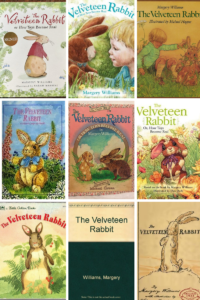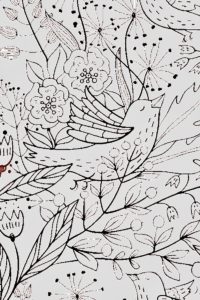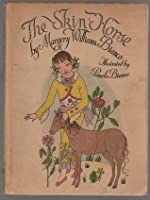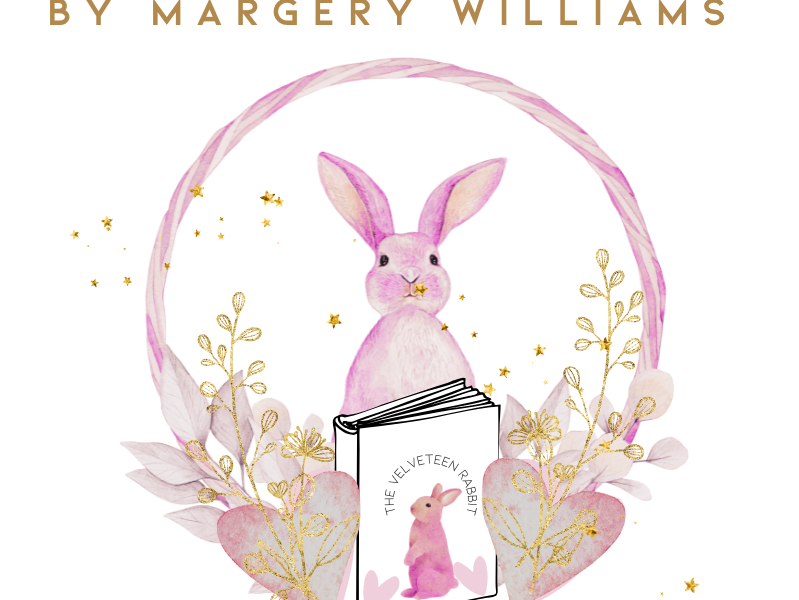Did you know that Margery Williams’ book The Velveteen Rabbit (or How Toys Become Real) has enchanted young readers for over 100 years? April the 12th of 2022 marks the 100th anniversary of the original 1922 publication date of The Velveteen Rabbit. The first copy Illustrated by William Nicholson has been revised many times with artwork contributed by a myriad of different artists.

The Detroit News 1924 review of The Velveteen Rabbit cited
How Toys Become Real is the inner story of The Velveteen Rabbit, but there’s no syrupy moral to it. It’s just that if a toy is loved enough, it finally, through the alchemy of love, becomes real.
The beloved children’s book written by British-born author Margery Williams has been a classic for ages.
Margery Williams was born in London in 1881. She adored her father Robert who was a classical scholar and a counselor. Her father’s theoretical philosophy of academia implied that he
believed children should be taught to read early and then have no regular teaching until they were 10.
Margery discovered her favorite big green three-volume set of books, Wood’s Natural History in her father’s library.

When she reflected on her childhood she asserted
I knew every reptile, bird, and beast in those volumes long before I knew my multiplication table.
Sadly, Margery’s father passed away when she was merely seven years old. Robert’s passing irrevocably changed his young daughter’s life.
It is true that some of the most beautiful stories ever written for children … have been sad stories,
Williams Bianco wrote in the literary magazine The Bookman in 1925.
But it is the sadness which is inseparable from life, which has to do with growth and change and impermanence, and with the very essence of beauty.
Two years after her father’s death, Margery and her family traveled to America. When the family left Britain Margery’s brother donated his skin toy horse, Dobbins, to the Children’s Hospital due to its large size. Years later, while thinking about Dobbins, Margery wrote a story called The Skin Horse.

The Williams’ 1890 excursion to the United States began in New York City. From there, her family settled on a farm in Pennsylvania. Margery spent her mornings hurriedly going over her lessons. When she finished her studies, Margery was free to explore the farm as she pleased.
Throughout her youth, Margery was schooled in Philadelphia, with an occasional year or two back in England. Then at seventeen, Margery decided to try the art of writing. Both in the states and abroad she received an abundance of rejection slips and nothing more. Then, periodically Margery’s articles were accepted for publication.
Her first novel The Late Returning was published in 1902 when Margery turned 21. Shortly after she began to write stories for children. Margery met her husband Francesco Bianco, an Italian book dealer when she was convening with her publisher. While happily attending to her son Cecero, and daughter Pamela, Margery lost the desire to sit down and write.
During the 4 long years of World War I, Margery studied the work of her mentor – poet Walter de la Mare. Margery believed that de la Mare fully understood the essence of children. After her husband Francesco fulfilled his duties in the war, the Williams/Bianco’s were eager to leave Italy.
In 1921, Margery and her family returned to the United States and inhabited Greenwich Village. While creating a new home in the village, Margery grew inspiration from her primary years, her children Cecero and Pamela, as well as from the poetic works of Walter de la Mare.
In The Junior Book Of Authors, Margery Williams wrote that her most celebrated story came to be as she was mulling over her childhood.
By thinking about toys and remembering toys, they suddenly became very much alive — Poor Cecco and all the family toys that had been so much a part of our lives; toys I had loved as a little girl — my almost forgotten Tubby who was the rabbit, and old Dobbin the Skin Horse (who belonged to my brother, and) the toys my children had loved.
Rejoicing in her dwelling, she decided to resume her writing and achieved nearly instantaneous notoriety.
The Velveteen Rabbit or How Toys Become Real was Margery Williams’ first American work and the book remains her most distinguished.
The story has remained a masterwork of literature through numerous transformations in children’s playhouses as well as on the radio, the broadcasting media, and in motion pictures.




